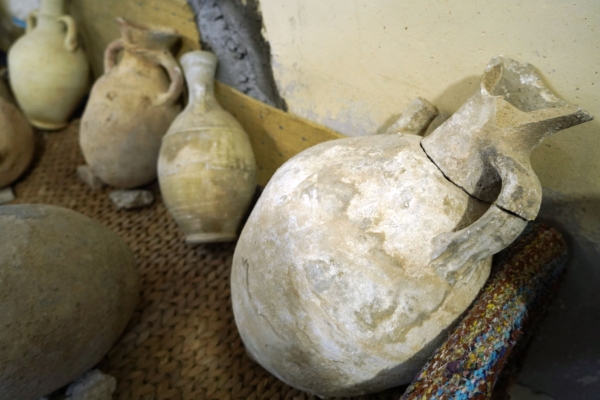A 4-year-old boy accidentally broke a 3,500-year-old pottery jar while visiting a museum with his family in Israel on August 23. The incident occurred at the Hecht Museum in Haifa, a city in northern Israel. Despite the boy’s unintended actions, the museum did not seek compensation. Instead, they invited the boy to revisit the museum after the jar had been repaired.
The pottery jar, dating back to the Bronze Age between 1500 and 2200 BC, was considered a rare artifact within the museum due to its intact condition before the accident. It was originally displayed at the museum’s entrance without being enclosed in a glass showcase.
The Hecht Museum believes in showcasing ancient artifacts directly to the public without barriers to enhance their allure. The boy’s father, Alex, explained that his son was curious about what was inside the jar and accidentally caused it to fall and break while trying to take a closer look.
Upon seeing his son next to the broken jar, Alex was initially shocked and reassured his son before informing museum security about the incident. The museum promptly appointed an expert to repair the jar and announced plans for its swift return to public display. The family was also invited for a guided tour to view the restored jar.
According to museum staff member Lihi Laszlo, deliberate destruction of exhibits would result in severe consequences, including police involvement. However, in this case, where the damage was accidental, a different approach was taken.
Alex expressed his relief at the completion of the jar’s restoration but acknowledged the changed nature of the artifact post-repair. The museum reiterated its commitment to traditional display methods, opting to exhibit items without glass enclosures whenever possible, despite the rare occurrence of such accidents.
The pottery jar predated the time of King David and King Solomon as mentioned in the Bible and was likely used for storing local commodities like wine and olive oil in the Canaan region on the eastern Mediterranean coast. Similar vessels found in archaeological excavations often show signs of damage or incompleteness, making the intact state of this particular jar exceptionally valuable.
Even though accidents like this are rare, the museum remains dedicated to showcasing artifacts in a manner that connects visitors directly with the ancient past.

